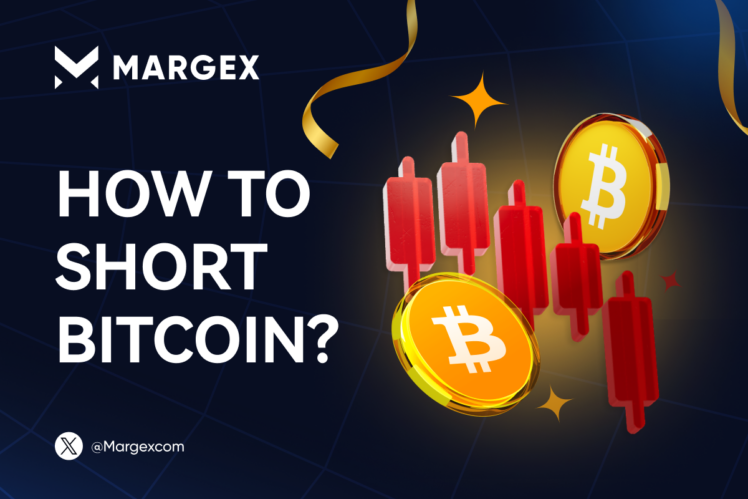How To Short Bitcoin?

Bitcoin delivered better performance than traditional assets during the past decade thanks to its digital supply limits, structured protocol releases, and growing market demand. Despite its successful growth pattern, Bitcoin has experienced major price drops and market downturns several times over the past decade.
Although many investors buy and hold Bitcoin (BTC) over the long term, they can also generate profits through short-selling strategies. People who trade BTC can benefit during a market dip by selling their holdings at a high price and then buying back when values drop.
This text explains how investors can begin short-selling Bitcoin as an investment method. This essential information makes trading guidelines and helps investors navigate brief cryptocurrency market fall periods.
Understanding Bitcoin Shorting
This guide teaches readers the basic difference between investing in Bitcoin as a holder and selling Bitcoin as a short trader. Examining this trade difference shows traders how to adapt their methods for successful performance in different market scenarios.
This guide teaches you how to short Bitcoin by showing easy-to-understand real-world examples. This section details the professional trading strategies experienced traders use to generate gains while Bitcoin prices decline.
Managing your risks is the most important part of trading Bitcoin short positions. Short selling poses distinct challenges that traders must recognize, such as losing more than limited gains and potential errors in market timing. The wrong timing for short-selling Bitcoin can result in major financial losses, so you need to accept these risks when taking a short position.
The article will show readers how to sell Bitcoin short positions in specific steps for successful trading results.
Bitcoin Shorting Explained: Strategies, Risks, and Execution
This guide starts by looking at basic asset trading concepts between taking buy and sell positions. The market strategy a trader selects depends on their understanding of this fundamental difference in market positions.
To explain Bitcoin short-selling, we provide simple expert examples of how to make money when Bitcoin falls in value. The guide teaches professional-level short-selling principles advanced traders use to profit from declining Bitcoin values.
Controlling investment risks is the main factor in Bitcoin shorting activities. Short selling creates special trading problems, including the possibility of infinite losses paired with limited profit potential. Starting a trade with a short position at the wrong time might erase all your money, so careful risk evaluation is required first.
A complete guide demonstrating how to buy Bitcoin when its price drops effectively will be found for people who want to short it.
Identifying Optimal Moments for Shorting Bitcoin
A short-selling strategy with good planning helps traders make profits when Bitcoin depreciates in value. The method brings good returns during market downturns, especially during the 2022 period when BTC’s value dropped by 65%.
Experienced cryptocurrency investors take advantage of price decreases during market uptrends. Seasoned traders study crypto market performance to predict future downward trends in prices relative to value growth.
Even though technical analysis has limits, traders who remain disciplined protect their positions and control risks through proven safety measures. Our guide on day trading crypto provides readers with practical trading methods even though this article does not include information about risk management in crypto day trades.

Exploring How to Short Bitcoin Works
According to the traders ‘ instructions, the exchange manages all the steps required to short Bitcoin and cryptocurrencies. Knowing how short-selling Bitcoin works helps traders make better investment choices.
To open a short position in Bitcoin trading means lending Bitcoin from the exchange at the current market rate. When BTC falls in value with its short position, open traders earn profits through lower repurchase costs. The trader completes their short by returning borrowed BTC to the exchange at a lower market value. When buying and selling Bitcoin trades, the trader gains profit from the difference between their selling cost and return price.
When traders expect a BTC market decline, they start selling Bitcoin with a 1 BTC short trade at $35,000. Over the next few weeks, the price drops to $30,000. As the market has fallen, the trader stops losing with their short position by buying the 1 BTC at its cheaper value. After making the short trade, the trader returns the borrowed BTC to the exchange platform.
Using no fees, the trader gains 5,000 US dollars. The investor gained because they sold Bitcoin for $35,000 and repurchased it at $30,000 to earn the price difference.
The process gets easier when major cryptocurrency exchanges simplify and automate short-selling steps for traders. The online platform handles all BTC transactions, including borrowing and selling, to improve regular spot trading efficiency.
Understanding the Risks and Strategies of Shorting Bitcoin
People think of short-selling as a hard trading tactic that new traders find difficult to learn. Short trading produces bigger profits but has greater dangers than positional investment in the basic market. Short-selling differs from regular Bitcoin buying because traders need to know specific financial rules before starting this method.
How Does Going Long on Bitcoin Work?
By buying Bitcoin on the spot market, traders risk losing their investment while limiting their exposure to the funds they invested. When you use funds to buy BTC, you are never at risk of losing more than your investment amount.
A trader who purchases 0.1 BTC at $35,000 and the asset collapses to zero will lose a maximum of $3,500. From a long position, you can earn unlimited profits until the market value increases. The profits you make from trading Bitcoin will grow in direct relation to its price increases, whether the price reaches $100,000, $1 million, or $10 million. When the trader sells 0.1 BTC, they will gain 10% of the final market price based on position size.
How Does Shorting Bitcoin Work?
In contrast to this strategy, investors sell assets they do not own. When you sell Bitcoin short, you can make a fixed profit, but your possible losses are unlimited. New traders avoid Bitcoin short selling because the potential losses could be more than their available money.
An investor can open a short trade today, selling 0.1 BTC for $35,000 due to their forecast of price reduction. However, due to unexpected bullish market events, the price rises to $65,000. The trader incurs a $3,000 loss since they need $6,500 to buy back their 0.1 BTC.
The short position protection depends on what margin funds remain in the trading account. The exchange platform needs to shut down your position automatically because the remaining funds in your account cannot cover the growing trading losses.
Advanced Short-Selling Strategies for Crypto Traders
Once traders understand short sales, they can extend their knowledge to advanced tools that can be used in falling market conditions. These techniques work well but require experience and can be dangerous for new traders.
Leverage and Margin Trading
Traders can enhance their trading capacity by borrowing funds using margin accounts. The deposit you make helps you trade more than your funds, although it requires the exchange to lend you additional money.
When traders use margin trading, they borrow funds through leverage which decides the ratio of funds they get over their trading capital. When traders put a $1,000 deposit alongside a 10x leverage, they can handle up to a $10,000 order combined with a $9,000 loan from the platform.
Traders can use leverage to boost both their purchases and sales of assets. Position growth through leverage simultaneously raises your vulnerability to market variances. Fluctuating crypto prices force exchanges to sell the positions of traders who use high leverage, which leads to trading account closure. Beginners in leverage trading need extra safety measures because the expanded risks will threaten their funds faster.
Our detailed margin and leverage trading guide provides complete information on this topic.
Futures, Options, and Perpetual Swaps
Everyone who trades futures options and perpetual swaps must understand how short-selling works. Major crypto exchanges present these specialized tools that let customers predict market price changes before they happen.
The parties in these trade agreements set their purchase and sale terms before a pre-set market expiration.
An options contract gives traders the privilege but not the duty to exchange assets at a set price within their agreed time frame.
Swaps work like futures contracts but stay open indefinitely traders need enough cash reserves for their opportunities to remain active.
You can use all three tools for short-term and long-term investments while employing leverage to control more trading capital. Before entering leveraged derivatives trading, traders need to learn the working principles of these tools.
Please view our separate guide to understand cryptocurrency futures, options, and perpetual swaps more deeply.
How To Short Bitcoin On Margex

- Through Margex, you can earn money when Bitcoin’s value decreases. Follow these simple steps to start a short position.
- You can open a new Margex account or sign in to your existing one.
- New users can begin their Margex journey by going to the registration page. Previous members can start using their accounts immediately.
Fund Your Account
- Go to your Wallet menu and select Deposit.
- Select your targeted cryptocurrency and follow the steps on the deposit screen.
- You can purchase cryptocurrency through Changelly and ChangeNow because Margex connects with these services to make credit card payments.
Access the Trading Platform
- Use the Trade tab to start trading.
Select the Bitcoin Trading Pair
- Pick BTC/USD from the provided trading pair options or select your Bitcoin preference.
Configure Your Short Position
Order Details
- Please type the Bitcoin amount you want to trade.
- Set your leverage through the slider or input manual values. Margin trading with Margex requires an understanding of the dangers that come with a maximum leverage of 100 times.
Risk Management
- Before trading, put automatic orders in place to protect your funds and secure profits.
Execute the Short Trade
- When everything in your settings is set properly, click the “Sell/Short” button to start your short trade.
Monitor and Close Your Position
- Regularly check your open trades through the Open Positions page.
- When you want to exit your position, choose it from the list and confirm the closure.
Bitcoin Current Trend and Price Analysis
At $105,000, Bitcoin maintained its position on Thursday following the Federal Reserve’s announcement to keep America’s interest rates steady. Market participants track US GDP figures released in the fourth quarter of 2024 because they drive Bitcoin’s price swings. According to Glassnode, the recent bull market patterns align with those seen in the 2015-2018 cycle, which suggests ongoing market enthusiasm will fuel Bitcoin’s price expansion.
Bitcoin’s Performance Following the Federal Reserve’s Decision
Bitcoin was stable at $105,000 on Thursday after a small rise following the Federal Open Market Committee meeting. The Federal Reserve left interest rates at their existing range of 4.25% to 4.50%, as expected. Due to continued low inflation levels, the central bank shifted its economic forecast to a more serious stance.
In its official policy statement, the Fed confirmed its positive outlook on jobs but indicated that the balance between its two national goals was stable. The committee showed reluctance to cut rates because it monitors ongoing changes to economic policies.
The marketplace quickly responded once the Federal Reserve revealed its decision. The 10-year U.S. Treasury note advanced 4.5 basis points to 4.581% after the announcement. During market hours, the DXY gained 0.17%, pushing its value to 108.10. The Bitcoin value rose 2.37% during Wednesday’s trading session. The Federal Reserve’s delay in cutting interest rates creates uncertainty that makes investors believe the crypto market will face a negative trend over an extended period.
Economic Indicators to Watch
Investors should follow BEA economic figures. They will publish preliminary GDP stats for October to December 2024. The upcoming economic data helps investors monitor growth patterns, which will influence Bitcoin’s market behavior in the next few weeks.
Glassnode Report Highlights Bitcoin’s Market Cycle
Glassnode recently published “Thinking Ahead” to share information about Bitcoin’s active market development. The study detects fundamental market patterns from 2015–2018 that support further growth during the present market phase.
According to the analysis, Bitcoin now feels like a more mature market thanks to its limited price increases, regular price drops during uptrends, and decreasing Realized Cap gains.
The current Realized Cap growth of 2.1 times matches the 2015 to 2018 cycle stage where it stood. The market is expected to see more price increases because investors stay enthusiastic about the asset.
Recent research reveals that wallets on crypto exchanges dropped to 2.7 million BTC from 3.1 million BTC during the summer of 2024. According to Glassnode, a part of BTC withdrawals represent transfers into Coinbase ETF custodial wallets rather than a genuine supply decline.
Key Technical Indicators and Price Outlook
Bitcoin’s price has found strong support near its 50-day Exponential Moving Average (EMA), which stood at $98,633 earlier in the week. On Wednesday, BTC gained 2.37%, closing above $103,700 before continuing its upward trend to trade around $105,400 on Thursday.
If the current bullish momentum persists, BTC could attempt to retest its January 20 all-time high of $109,588.
Technical indicators signal growing bullish sentiment. The Relative Strength Index (RSI) on the daily chart stands at 60, rebounding above the neutral 50 level on Tuesday. This suggests increasing buying pressure. Meanwhile, the Moving Average Convergence Divergence (MACD) indicator is nearing a potential bullish crossover. If the MACD confirms this crossover on the daily chart, it could generate a buy signal and reinforce expectations of an upward trend.
Conversely, a break below the psychological support level of $100,000, coupled with a daily close below the 50-day EMA, could signal a deeper correction. In such a scenario, Bitcoin might test the next significant support level around $90,000.
Conclusion
Bitcoin’s ability to hold above $105,000 despite the Federal Reserve’s decision to maintain interest rates reflects the market’s resilience. However, the upcoming release of U.S. GDP data and broader macroeconomic conditions could introduce volatility. While Glassnode’s analysis suggests Bitcoin’s current cycle aligns with historical bull markets, price movements will largely depend on investor sentiment and external economic developments.


